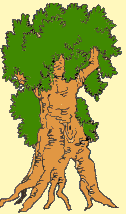BRASSICA OLERACEA
BRASSICA OLERACEA
French: cauliflower Wolof: soupomé Goun: Chou.
Family: Brassicaceae (Cruciferae).
Origin: temperate Asia.
Foliage: 'persistent', glaucous. Large, thick, fleshy, smooth or curly or very divided leaves, lobed with a thick, prominent central vein, some with curly margins.
Flowering: spring-summer the second year (April to July), melliferous. Inflorescence on a stem with narrow leaves, hermaphrodite flowers with 4 upright petals, arranged in a cross, 4 sepals, 6 stamens and 2 carpels
Color: white yellow for the flowers for the leaves white, creamy white, pale pink to deep pink, purple parma, and jade green. The centers are pink or white and the outside green or purple.
Rapid growth.
Height: 0.25-0.4m to 1m and above, diameter 25-30cm.
Planting: spring. Transplant in place after 6 - 8 weeks, does not like to be moved. He likes ordinary (clay), drained, humus, acidic or neutral soils and appreciates limestone, fertile or rich.
Properties and uses:
Cabbage is rich in vitamins A, B, C, and U (anti-ulcer), minerals, trace elements. It is eaten raw or cooked.
It is used as an anti-scurvy, as an anthelmintic, and is prescribed for dysentery.
Its cooking water is used to treat coughs and bronchitis.
Its fresh juice facilitates digestion, it has an action on the liver, gastric and duodenal ulcers, and colitis.
As a poultice, the leaves are beneficial for skin problems such as abscesses, boils, sores, and ulcers. They disinfect and facilitate healing, also they are effective on insect bites, and on the other hand they have a calming action on rheumatism, arthritis, lumbago, sciatica, and gout attacks.
Add a comment























